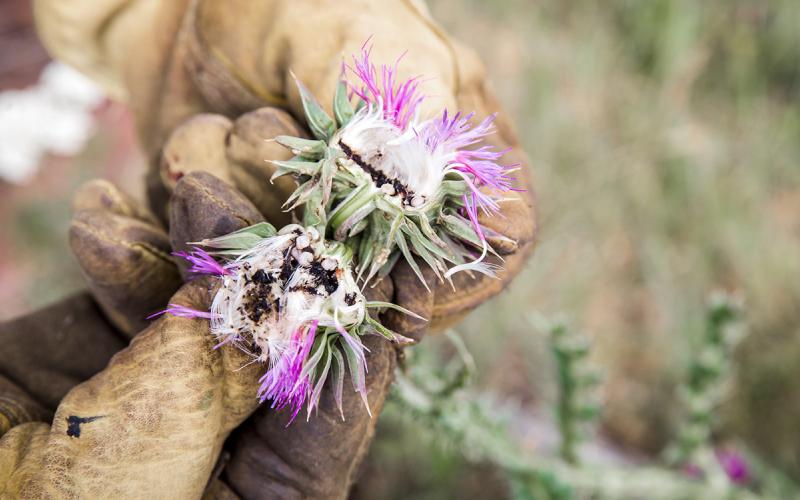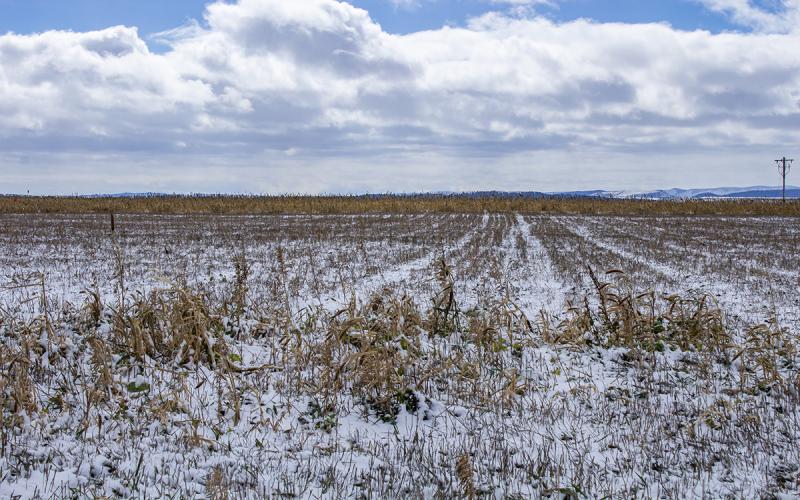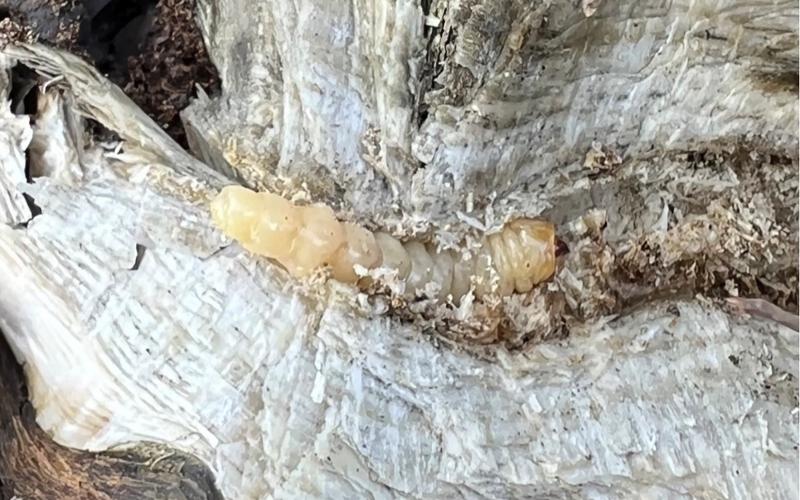Written collaboratively by Emmanuel Byamukama, former SDSU Extension Plant Pathologist, Febina Mathew, and Ruth Beck.
Sunflower scouted this week in Brookings and Kingsbury counties were found with bacterial stem rot, Sclerotinia basal rot and sunflower rust. This area has had plenty of moisture, which favors several diseases to develop in sunflower. Most sunflowers have bloomed and it is usually after this growth stage that most diseases will start to develop.
Bacterial Stalk Rot

Bacterial stalk rot is caused by a bacterial pathogen called Pectobacterium spp. The bacteria survive in the plant debris and in soil. The bacteria are splashed onto leaves and infection is promoted by extended wet periods.
Infection starts at the petiole axis (Figure 1) which has abundance of free moisture and progresses to the stem. Infection of the stem leads to the rotting of the pith.
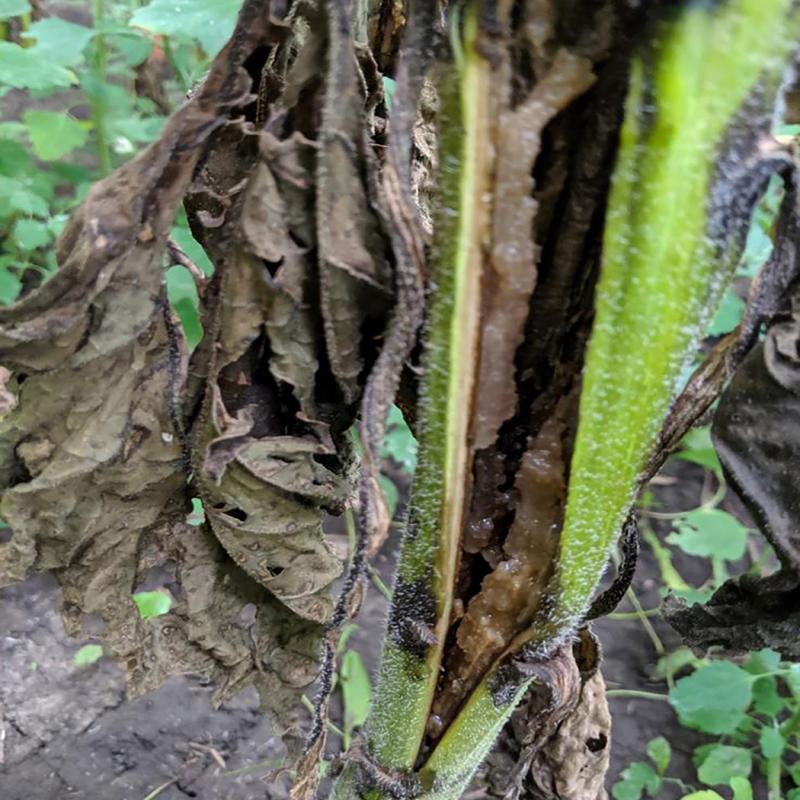
For plants with advanced infection, squeezing the stem between fingers will lead to the collapse of the stem, revealing the extensive rotting (Figure 2). Bacterial stalk rot usually develops in stressed plants (excessive moisture or other stresses) and therefore is considered a minor disease.
For fields with high incidence of this disease, a 4-year rotation away from sunflower may help reduce the inoculum of this bacteria.
Sclerotinia Basal Rot
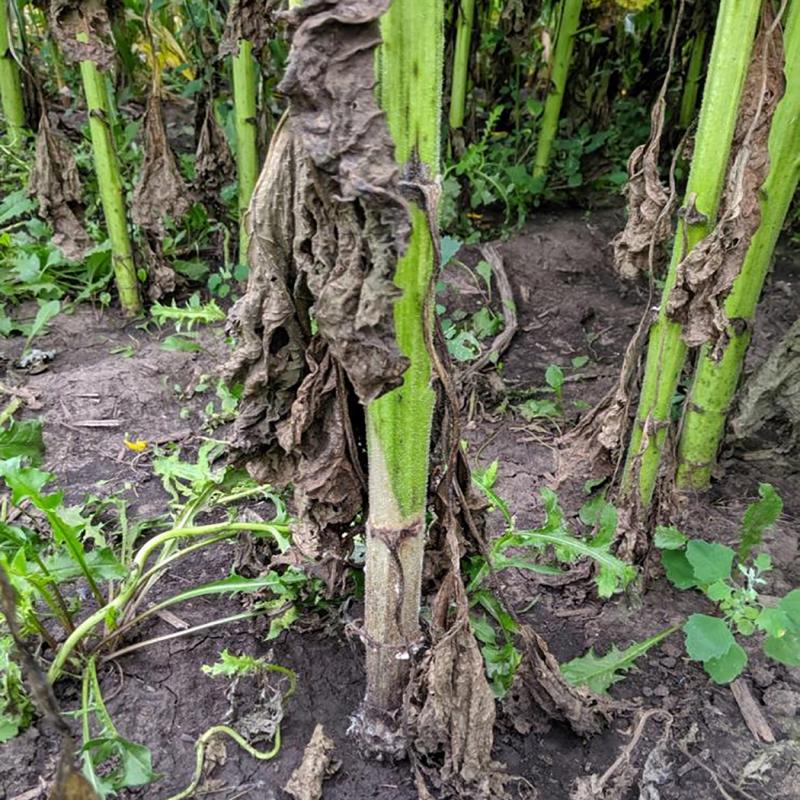
Sclerotinia basal rot is caused by a fungal pathogen, Sclerotinia sclerotiorum. The basal rot is characterized by sudden wilting of leaves, root rot and a basal stem canker. The disease starts as a stem canker at the base of the plant (Figure 3) and eventually the canker girdles the entire stem. The color of the canker may be tan, greyish or green-brown in color. As the symptoms progress, the stalk becomes bleached and may have whitish mycelia. The base of the stem may have sclerotia, which are the overwintering structures of the fungus (Figure 4).
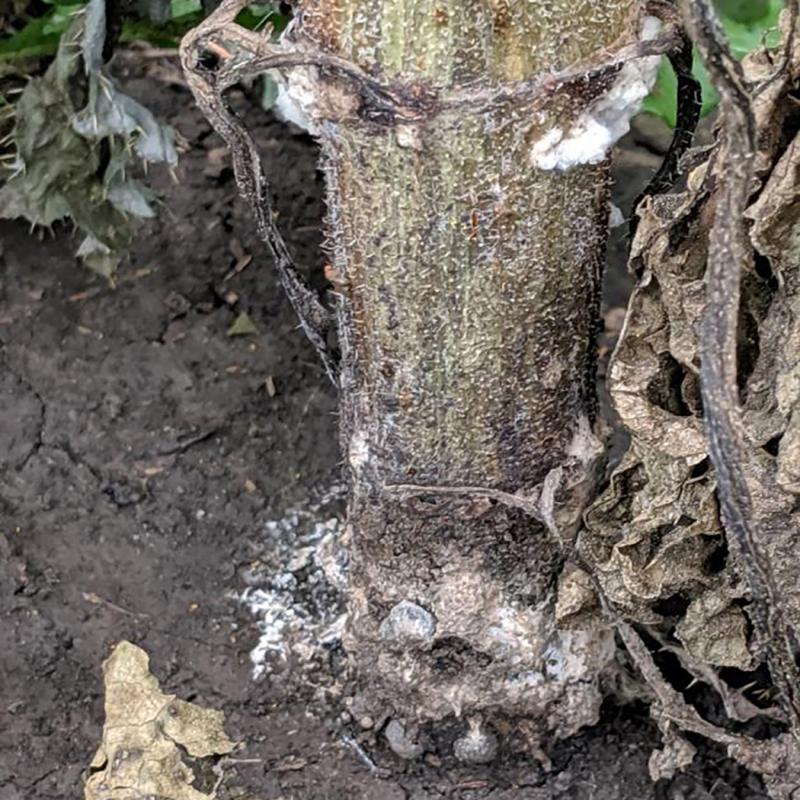
The sclerotinia pathogen survives in the soil and in infected plant debris as sclerotia (Figure 4). The sclerotia germinates after stimulation from sunflower roots and decays the roots. The fungus then progresses through the stem causing above ground symptoms. Contact with infected roots will spread the disease among the neighboring plants. Although the sclerotia can remain viable in the soil for a few years, rotating into non-hosts 3-5 years will eventually reduce the inoculum in the soil.
Sunflower Rust
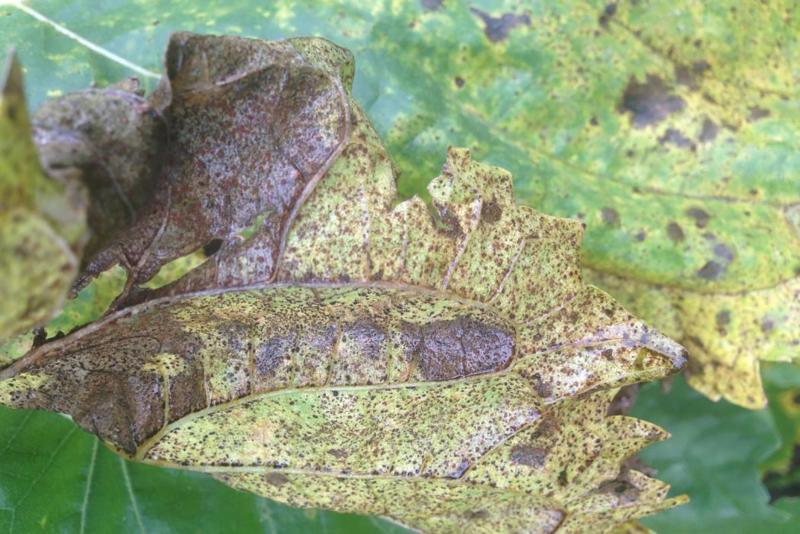
Sunflower rust is caused by a fungal pathogen, Puccinia heliathi. Infection starts to develop on lower leaves and can reach yield-reducing levels in a relatively short time. Sunflower rust forms pustules that are cinnamon brown both on the upper and the underside of the leaf (Figure 5). Sunflower rust pathogen will develop on volunteer and wild sunflowers. Spores are spread to other fields by wind; therefore crop rotation does not help in managing sunflower rust. Producers can manage sunflower rust through use of resistant sunflower hybrids and application of a well-timed fungicide. The threshold for applying a fungicide for sunflower rust is 1% average diseased leaf area on the upper four, fully expanded leaves at or before bloom (R5). Fungicides effective against sunflower rust can be found in the 2019 South Dakota Pest Management Guide: Alfalfa and Oilseeds. Scout sunflower fields and monitor weather conditions to decide on the fungicide application.
